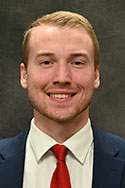Sawing Logs...What's All the Buzz About Obstructive Sleep Apnea?
by Jacob Tupa
September 2024
Losing sleep due to a loved one's snoring? Tired of waking up groggy while they seem to be having a great night's rest? Their sweet dreams may be causing more harm than good and could indicate health problems, one being obstructive sleep apnea (OSA).
What is OSA? The National Institutes of Health defines Obstructive Sleep Apnea as a common condition where breathing stops and restarts many times while sleeping. Breaking it down: Obstructive, meaning the airway falls on itself making air movement difficult; sleep, because it happens while napping or sleeping at night; and apnea, where breathing stops causing your oxygen levels to fall.
Although individuals with normal weight can have OSA, anyone carrying a few extra pounds is prone to OSA. One red flag can be feeling excessively tired during the day when not active. This can make driving dangerous for both the one with OSA and others on the road due to falling asleep at the wheel. Kids can also have OSA, and symptoms can differ from adults. One of the most common causes are enlarged tonsils and adenoids. Parents and teachers should look for several red flags that might indicate possible OSA; increased movement, trouble paying attention, and poor school performance may all be signs of impaired sleep at night.
Consequences of OSA, if left untreated, can impact both adults and kids. If breathing stops throughout the night, it causes the heart to work harder leading to a higher pressure in blood vessels, which could lead to many conditions, including a stroke.
OSA is diagnosed with a nighttime sleep study, where a person's oxygen levels are monitored and any periods where breathing stops are detected. If the sleep study is positive, counseling is often offered to lose a few pounds to reduce fat in the neck and abdomen, causing less pressure on the airway. Possible medication adjustments are made, changing or stopping those that cause drowsiness. For kids, medications, such as nasal sprays, may help open the airway. If tonsils and adenoids are the issue, surgical removal may be necessary to improve airflow.
 However, for most
adults – and sometimes for kids –
continuous positive airway pressure, better known as
CPAP, is the most effective treatment. CPAP is a machine
that delivers continuous air flow through the mouth and
nose using a special fitted mask to keep the airway open
when sleeping. If CPAP isn't tolerated, some people might
qualify for a new surgical option. The surgery implants a
device in the neck and chest that stimulates the muscles
and nerves that control breathing, improving airflow.
However, for most
adults – and sometimes for kids –
continuous positive airway pressure, better known as
CPAP, is the most effective treatment. CPAP is a machine
that delivers continuous air flow through the mouth and
nose using a special fitted mask to keep the airway open
when sleeping. If CPAP isn't tolerated, some people might
qualify for a new surgical option. The surgery implants a
device in the neck and chest that stimulates the muscles
and nerves that control breathing, improving airflow.
In summary, if someone "saws logs" while sleeping, seems excessively sleepy throughout the day, and falls asleep easily on car rides, now might be the time to schedule an appointment with your healthcare professional to check for OSA. It may not only improve sleep but could also save a life.
About the Author
 Jacob Tupa is a third-year medical student at the
University of North Dakota School of Medicine & Health
Sciences. After his clinical experiences in Park River,
Tupa chose to participate in the Targeted Rural Health
Education (TRHE) project, a project focusing on teaching
student doctors how to partner with rural newspapers to
share health information. The information provided is not
for diagnosis or treatment and should not be used in
place of previous medical advice provided by a licensed
healthcare professional.
Jacob Tupa is a third-year medical student at the
University of North Dakota School of Medicine & Health
Sciences. After his clinical experiences in Park River,
Tupa chose to participate in the Targeted Rural Health
Education (TRHE) project, a project focusing on teaching
student doctors how to partner with rural newspapers to
share health information. The information provided is not
for diagnosis or treatment and should not be used in
place of previous medical advice provided by a licensed
healthcare professional.
